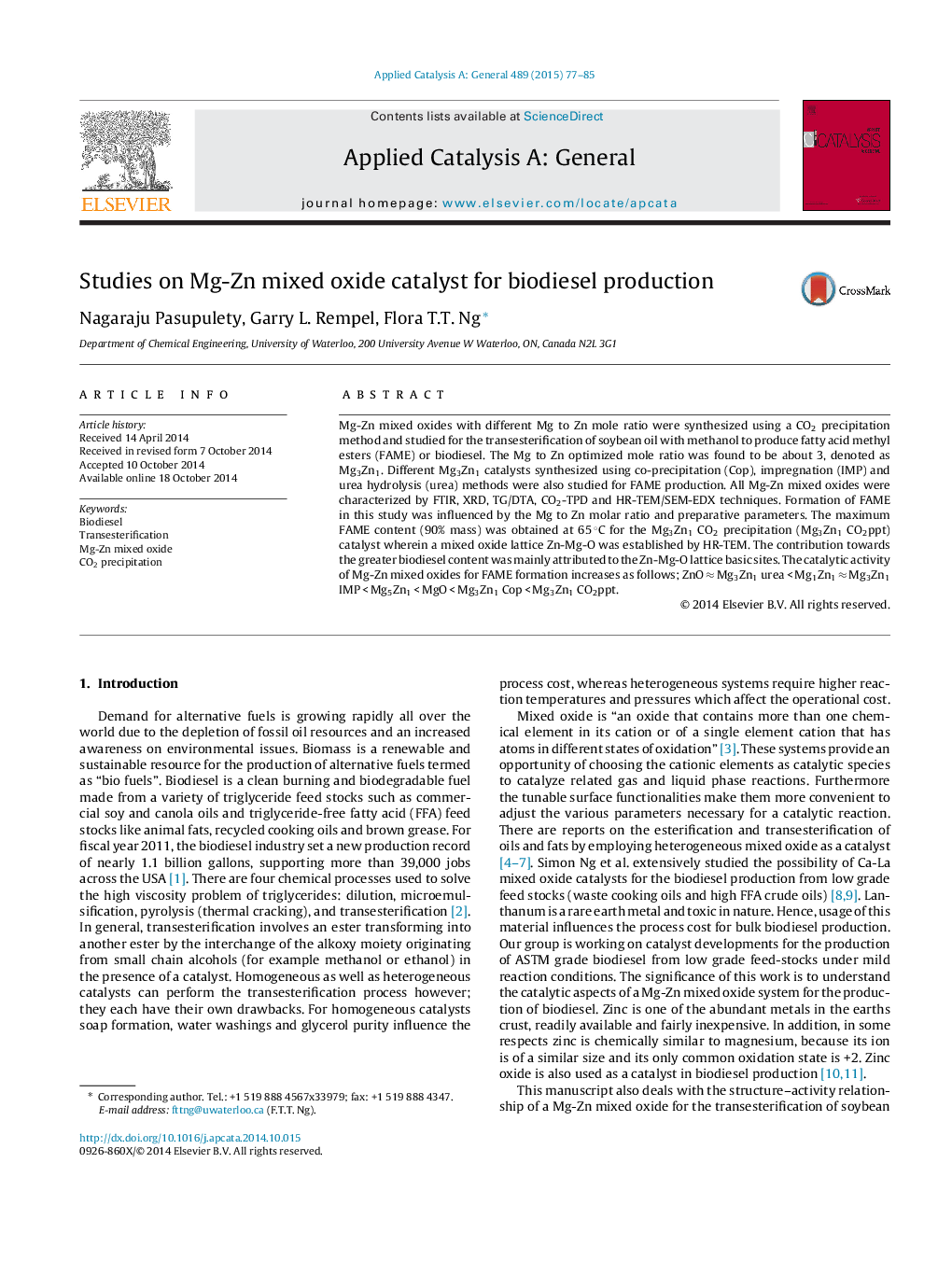| Article ID | Journal | Published Year | Pages | File Type |
|---|---|---|---|---|
| 39396 | Applied Catalysis A: General | 2015 | 9 Pages |
•Catalyst precipitating agent effects the formation of mixed oxide Zn-Mg-O.•FAME content influenced by (1) Mg to Zn mole ratio (2) Zn-Mg-O role on basicity.•The deactivation is associated with blocking of active basic sites by organic moiety.•Biodiesel effectively produced at low temperature by using solid Mg3Zn1 CO2ppt.
Mg-Zn mixed oxides with different Mg to Zn mole ratio were synthesized using a CO2 precipitation method and studied for the transesterification of soybean oil with methanol to produce fatty acid methyl esters (FAME) or biodiesel. The Mg to Zn optimized mole ratio was found to be about 3, denoted as Mg3Zn1. Different Mg3Zn1 catalysts synthesized using co-precipitation (Cop), impregnation (IMP) and urea hydrolysis (urea) methods were also studied for FAME production. All Mg-Zn mixed oxides were characterized by FTIR, XRD, TG/DTA, CO2-TPD and HR-TEM/SEM-EDX techniques. Formation of FAME in this study was influenced by the Mg to Zn molar ratio and preparative parameters. The maximum FAME content (90% mass) was obtained at 65 °C for the Mg3Zn1 CO2 precipitation (Mg3Zn1 CO2ppt) catalyst wherein a mixed oxide lattice Zn-Mg-O was established by HR-TEM. The contribution towards the greater biodiesel content was mainly attributed to the Zn-Mg-O lattice basic sites. The catalytic activity of Mg-Zn mixed oxides for FAME formation increases as follows; ZnO ≈ Mg3Zn1 urea < Mg1Zn1 ≈ Mg3Zn1 IMP < Mg5Zn1 < MgO < Mg3Zn1 Cop < Mg3Zn1 CO2ppt.
Graphical abstractFigure optionsDownload full-size imageDownload high-quality image (103 K)Download as PowerPoint slide
